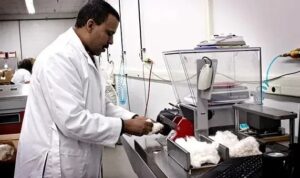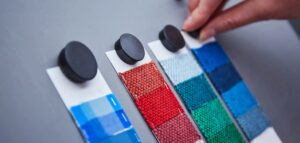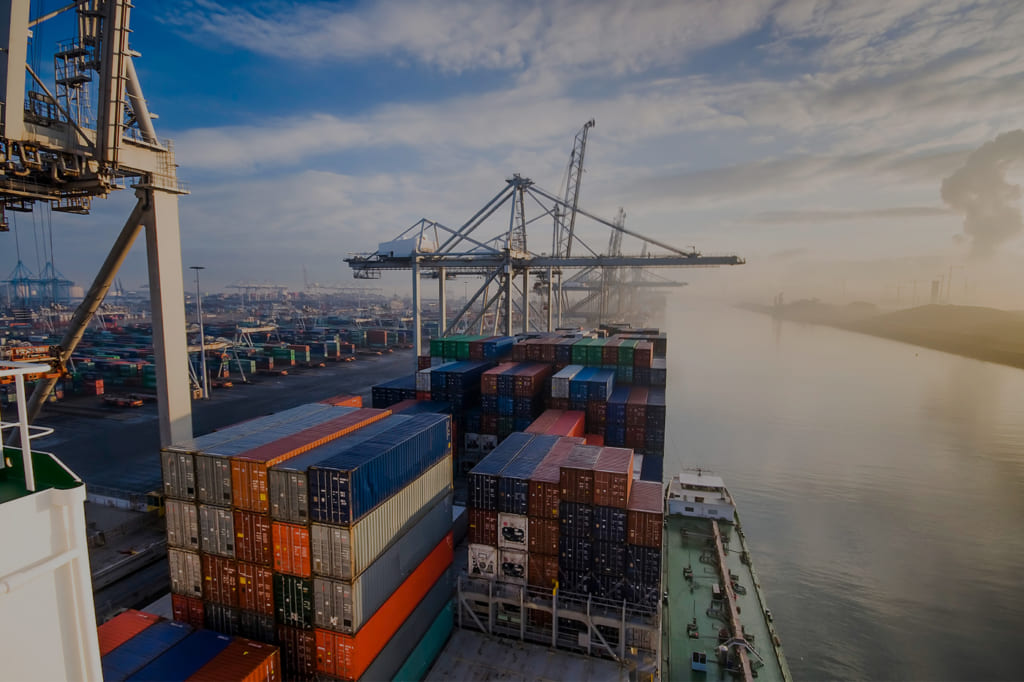What do you know about modal fiber and modal fabric
Modal fabric stands out as a state-of-the-art advancement in textiles that uses 10-20 times less water than regular cotton production. This beech tree-derived material makes up just 3% of global cellulosic production, but its exceptional benefits have made it a rising star in modern textiles.
The fabric’s performance is impressive – it absorbs 50% more moisture than cotton and keeps its shape after many washes. Its silky-soft texture and long-lasting durability make it perfect for everything from activewear to luxury bedding.
Let’s get into what makes modal special, how it stacks up against other fabrics, and where you’ll find it in everyday products. This piece will help you understand why modal has become such an important player in the textile industry, whether you care about environmentally responsible fashion or just want comfortable, durable clothes.
What is Modal Fabric: Origins and Basic Properties
Modal fabric came from beech tree pulp as a textile breakthrough in Japan in 1951. This luxurious material has become popular because of its exceptional qualities and environmentally responsible production methods. The fabric belongs to high wet modulus rayon and performs better than traditional rayon varieties.
The beech tree connection
The story of modal starts with beech trees harvested responsibly from Northern and Central Europe. Beech trees grow well without artificial irrigation, unlike cotton plants. This makes them an eco-friendly source for textiles. Austrian and neighboring countries supply more than half of the wood used to make modal. The environmental footprint stays low since beech trees need 10-20 times less water than cotton. This huge drop in water usage makes modal a better choice than regular fabrics.
Semi-synthetic classification explained
Modal is semi-synthetic because its manufacturing combines natural materials with chemical treatments, even though it comes from nature. The process starts by breaking beech wood into chips to extract cellulose. The cellulose sheets soak in sodium hydroxide (caustic soda) before being dipped in carbon disulfide. Modal production uses fewer chemicals than viscose rayon and creates less toxic waste. The mixture goes through spinnerets to create fibers that are treated, washed, and spun into yarn. This method needs fewer steps than viscose production and leaves a smaller environmental footprint.
Key characteristics that define modal
Modal stands out because it’s twice as soft as cotton with a silky feel against your skin. Its high wet modulus means clothes keep their shape after many washes and stay strong when wet. The fabric can handle moisture better and soaks up 50% more moisture than cotton.
The fabric also offers:
- Breathable material that keeps sweat away
- Strong resistance to pilling, shrinking, and fading
- Natural stretch that feels comfortable
- Colors that stay bright with minimal wrinkles
- Biodegradable properties that help the environment
These features make modal perfect for underwear, sportswear, and luxury bedding. Lenzing AG in Austria produces most commercial modal today, with trademark brands like Lenzing Modal and Formatex.
Modal vs Other Fabrics: How It Compares
Understanding fabrics becomes easier when we compare them to ones we know well. Modal fabric has advantages that stand out when compared to other common textiles.
Modal and cotton: Softness meets durability
Modal stands out compared to cotton, though both have their strong points. Modal absorbs 50% more moisture than cotton, which makes it better at keeping skin dry and comfortable. Cotton tends to hold moisture and feels heavy against skin, while modal pulls away sweat quickly.
Modal also keeps its shape and size better after washing, unlike cotton which often shrinks. Cotton is known to be durable against external forces, but modal resists pilling and fading better, which helps colors stay bright longer.
Modal versus silk: The affordable luxury alternative
Modal works great as a vegan alternative to silk and gives you the same luxurious feel at a better price. Both fabrics are smooth and drape well, but modal needs nowhere near the special care that delicate silk does.
The silky feel of modal works well for people with sensitive skin. It feels as gentle as silk without needing so much care or costing as much.
How modal is different from standard rayon
As a type of rayon, modal shows how the original fabric has improved. The biggest difference is that modal is a “high wet modulus rayon,” which means it stays strong when wet, unlike standard viscose rayon that gets much weaker.
Making modal uses less sodium hydroxide than viscose, which reduces harm to the environment. Extra processing makes modal stronger, lighter, and easier to breathe in than other rayons.
Modal compared to synthetic fabrics
Modal breathes better than polyester and other synthetics. Its plant-based structure lets air flow better, which keeps you cooler and more comfortable.
Synthetics are known for lasting long, but modal regulates temperature better and feels nicer against your skin. Modal’s ability to break down naturally gives it an edge over synthetic options that take decades or centuries to decompose.
Benefits and Limitations of Modal Fabric
Modal fabric stands out from other textiles today because of its amazing performance benefits. Here’s a closer look at what makes it special and what you should know about wearing it.
Exceptional softness and comfort
Modal fabric’s buttery softness sets it apart from other materials. It feels silky smooth on your skin with a natural, luxurious touch. The fabric matches the exceptional softness of cashmere and silk, which makes it perfect for clothes that touch your skin directly. People with sensitive skin love its gentle feel. Users say modal feels twice as soft as cotton and gives them a unique comfort experience.
Breathability and moisture management
Your comfort level stays high with modal’s superior moisture control. The fabric pulls sweat away from your skin and helps it evaporate fast by absorbing 50% more moisture than cotton. You won’t get that clammy feeling common with less breathable fabrics. Air flows easily through the fabric’s weave to keep you comfortable in warm weather and during workouts. Tests show modal moves and spreads moisture 50% faster than similar fibers, which proves its excellent moisture control.
Durability and shape retention
Long fibers and tight weaving give modal fabric impressive staying power. The fabric fights off pilling, shrinking, and fading even after you wash it many times. Your modal clothes keep their shape well despite regular stretching. Colors stay bright longer than cotton and the fabric maintains its size and shape throughout its life.
Potential drawbacks to think about
Modal does have some limitations:
- Heat sensitivity: High temperatures might make the fabric turn yellow or lose shape
- Potential allergies: Some people get skin irritations like rashes, redness, or itching
- Wrinkling tendency: You might need to iron or steam modal since it can wrinkle
- Special care needs: Modal lasts longer with gentle washing even though it’s machine washable
Popular Uses of Modal in Everyday Products
Modal fabric has become a part of our daily lives, appearing in everything from favorite t-shirts to luxury bed sheets. This beech tree-derived material works perfectly for items that touch your skin because of its versatile nature.
Modal in comfortable clothing items
Modal fabric’s exceptional softness makes it a natural choice for intimate apparel and basics. You’ll find modal in underwear, t-shirts, and pajamas because it feels silky and gentle on sensitive skin. The fabric lets your skin breathe and doesn’t hold sweat or odors, which makes it great for everyday use. The fabric’s flexibility creates a comfortable fit for casual clothes.
Brands often market modal as a luxury option in their clothing lines. Some boxer briefs and micromodal bras highlight the fabric’s silky-soft qualities. These garments keep their shape and smooth finish even after multiple washes, making them reliable wardrobe staples.
Bedding and home textiles
Modal creates a luxurious bedding experience. Modal sheet sets typically feature thread counts between 300-400, giving them a silky feel that’s like higher thread count cotton sheets. Premium bedding brands offer modal sheets and sometimes blend it with Egyptian cotton to improve comfort.
The fabric breathes well and absorbs moisture, which helps people who sleep hot stay comfortable. Modal bedding becomes softer with each wash and resists pilling, which gives lasting comfort night after night.
Activewear and performance apparel
Athletic clothing companies have discovered modal fabric’s performance benefits. Modal absorbs 50% more moisture than cotton and pulls sweat away from your skin during exercise to keep you dry and comfortable.
Modal’s natural stretch makes it perfect for:
- Yoga pants and leggings
- Performance tops and tank tops
- Athletic shorts and hoodies
Activewear brands now feature modal collections that showcase the fabric’s breathability and moisture-wicking properties. These garments keep their shape even during intense workouts thanks to the material’s durability.
Conclusion
Modal fabric is a game-changing innovation in eco-friendly textiles that outperforms traditional materials. Beech trees are the source of this remarkable fabric that makes up only 3% of global cellulosic production. Yet it delivers outstanding results in many different uses.
Modal’s combination of moisture-wicking properties, durability, and incredible softness makes it perfect for daily wear, high-end bedding, and athletic clothing. The fabric’s benefits easily outweigh its few limitations like sensitivity to heat and special washing needs.
People today care more about making sustainable fashion choices. Modal offers a practical answer that brings together comfort and environmental responsibility. This eco-friendly material needs nowhere near as much water as cotton to produce. It still maintains premium qualities that match both practical needs and consumer priorities.







